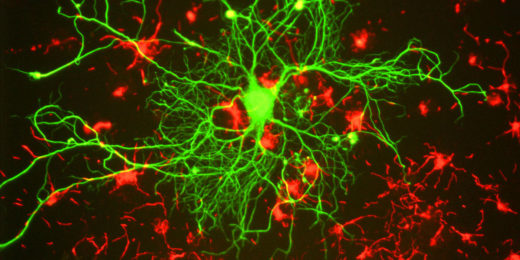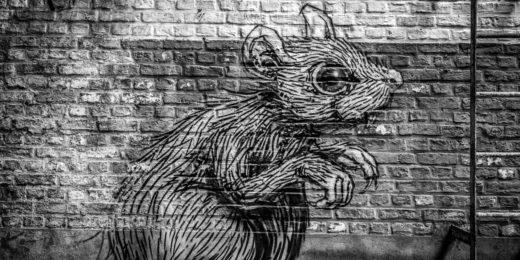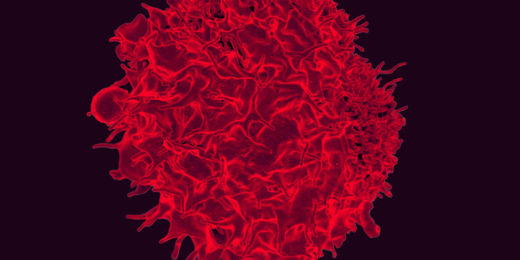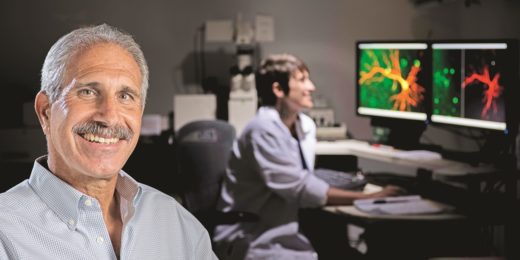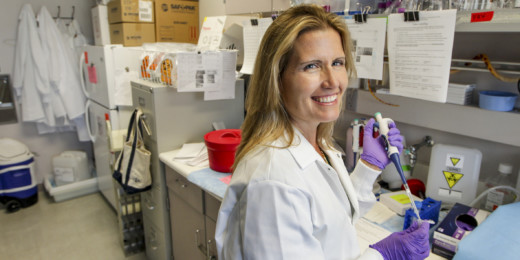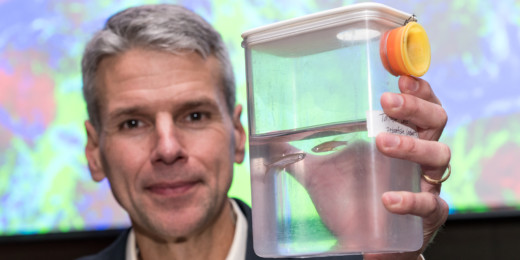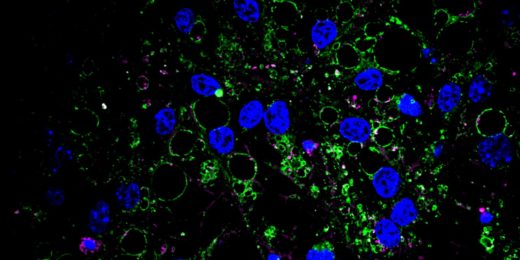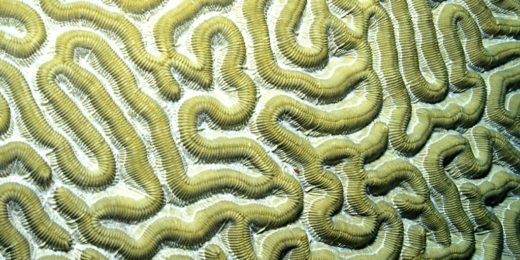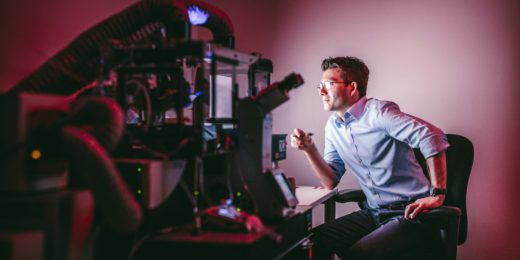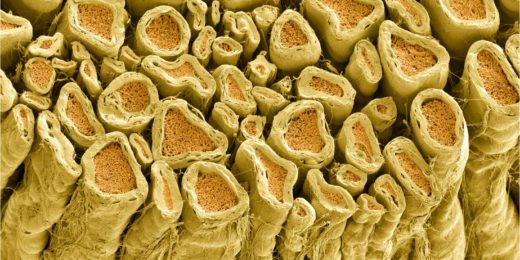Blood cells to neurons in just three weeks? Stanford researchers pull off an amazing biological transformation that could transform research into neurological disorders such as schizophrenia and autism.
Category: Neurobiology
New app screens for undiagnosed cases of Alzheimer’s disease
With half of all cases of Alzheimer's disease and related dementias going undiagnosed, researchers develop app to help in early screening
Parkinson’s is more complex than anyone thought, new research suggests
Stanford researchers set out to test a seminal theory of Parkinson’s disease and several related conditions. What they found is more complex than anyone had imagined.
Hormone levels in fluid around brain could be an autism biomarker
Vasopressin levels are low in the cerebrospinal fluid of less-social rhesus monkeys and in people with autism, the study found. The discovery suggests that it may be possible to design a lab test to identify autism in kids.
Found in a mouse: the brain’s “face your fear” center
The discovery, in mice, of a pair of nerve clusters regulating fearful versus bold responses to a visual threat could help people with excessive anxiety, phobias or post-traumatic stress disorder lead more normal lives.
Tackle opioid addictions at the onset, the doctor’s office, Stanford researchers urge
In a JAMA opinion piece, Gary Peltz and Tom Sudhof argue for policymakers and health leaders to combat opioid addictions early.
On caring for suicidal patients: A psychiatrist reflects
Stanford psychiatry resident Nathaniel Morris describes what it’s like to treat patients in the hospital after an attempted suicide.
Engineered immune cells clear deadly pediatric brain tumor in mice
Scientists have made an important step forward in treating a deadly childhood brain tumor, using T cells engineered to target a surface sugar found on the cancer cells.
Being a neuroscientist: A conversation with veteran Stanford brain researcher Rob Malenka
In an interview in the journal Neuron, Stanford's Rob Malenka holds forth on a wide range of subjects stretching from reflections on his own career trajectory to his approach to boosting those of his trainees to the future of neuroscience itself.
Stanford researcher making strides toward understanding autism
Inspired by family members to pursue a science career, Stanford's Karen Parker is working to better understand the biological basis of social functioning as related to autism.
Probing concussion’s complexities with football mouthguards and a whole lot of computer time
Concussion is a serious public health problem, but researchers don't fully understand how they happen or how to prevent them. Now, researchers find, concussion is more complex than previously thought.
Inventing the future: How scientific discovery can have exponential impact
The Stanford Medicine Discovery Innovation Awards provide funding to support early-stage, creative research, fueling scientific discoveries.
Aging neural stem cells struggle to take out the trash, say Stanford researchers
Protein aggregates in young neural stem cells seem to echo those seen in neurodegenerative disease-- but could they actually be helpful? As the cells age, they become less able to process the aggregates and their ability to activate is dampened.
BrainPost: Neuroscience summarized and delivered to your inbox
The new e-newsletter BrainPost helps neuroscientists and others stay up-to-date by providing summaries of the latest neuroscience publications.
“Brain balls” let scientists mimic, study neurodevelopmental disorders in a dish
The human brain, and how it works, is one of the great mysteries of science. If only you could grow a brain in a bottle, you could learn a lot about what can go wrong – or for that matter, what goes right – in early brain development. So that's why Sergiu Pasca did.
Advanced cell-labeling technology identifies suspect cell type, possible new therapeutic approach to multiple sclerosis
Researchers have identified an immune cell type with an apparently critical role in multiple sclerosis, and a way to block its entry into the brain.


